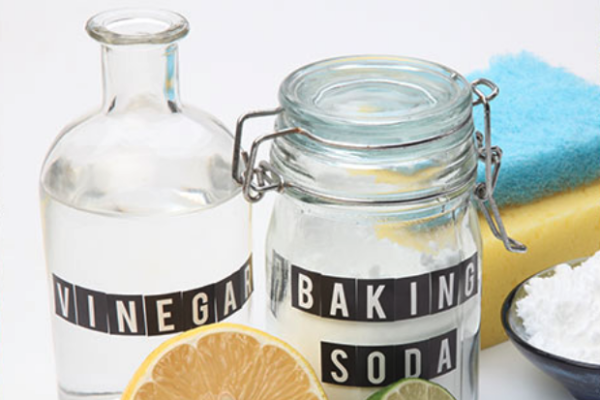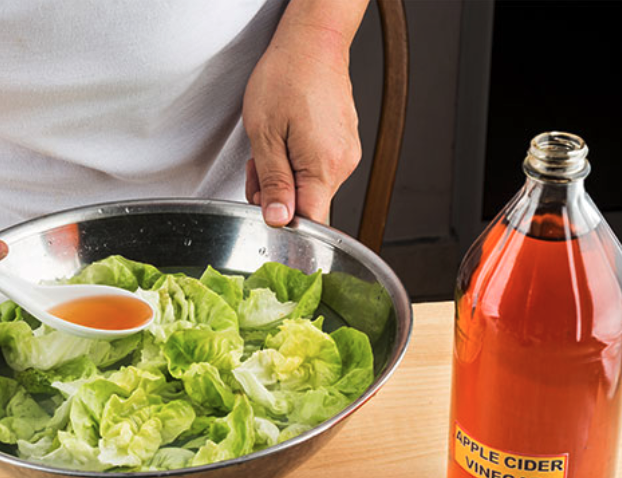Key Points/Overview
One of the most common ways consumers may come into contact with acetic acid is in the form of household vinegar, which generally contains about 5 percent acetic acid and 95 percent water.
When acetic acid is at 99.5 percent concentration, it is referred to a glacial acetic acid, which can be used as raw material and solvent in the production of other chemical products.
Industrial applications of glacial acetic acid include producing vinyl acetate, as solvent to dissolve oils, sulfur and iodine; acidizing oil and gas; manufacturing pharmaceuticals and vitamins, and food processing.
Occupational exposure to glacial acetic acid can occur through inhalation and skin or eye contact. OSHA has set standards for exposure to acetic acid.
Uses & Benefits
One of the most common ways consumers may come into contact with acetic acid is in the form of household vinegar, which is naturally made from fermentable sources such as wine, potatoes, apples, grapes, berries and grains. Vinegar is a clear solution generally containing about 5 percent acetic acid and 95 percent water. Vinegar is used as a food ingredient and can also be an ingredient in personal care products, household cleaners, pet shampoos and many other products for the home:

- Food Preparation: Vinegar is a common food ingredient, often used as a brine in pickling liquids, vinaigrettes, marinades and other salad dressings. Vinegar also can be used in food preparation to help control Salmonella contamination in meat and poultry products.
- Cleaning: Vinegar can be used throughout the home as a window cleaner, to clean automatic coffee makers and dishes, as a rinsing agent for dishwashers, and to clean bathroom tile and grout. Vinegar can also be used to clean food-related tools and equipment because it generally does not leave behind a harmful residue and requires less rinsing.
- Gardening: In concentrations of 10 to 20 percent, acetic acid can be used as a weed killer on gardens and lawns. When used as an herbicide, the acetic acid can kill weeds that have emerged from the soil, but does not affect the roots of the weed, so they can regrow.

When acetic acid is at 99.5 percent concentration, it is referred to as glacial acetic acid. Glacial acetic acid has a variety of uses, including as a raw material and solvent in the production of other chemical products.
Industrial applications for glacial acetic acid include:
- Vinyl Acetate, cellulose fibers and plastics: Acetic acid is used to make many chemicals, including vinyl acetate, acetic anhydride and acetate esters.
- Vinyl acetate is used to make polyvinyl acetate, a polymer used in paints, adhesives, plastics and textile finishes.
- Acetic anhydride is used in the manufacture of cellulose acetate fibers and plastics used for photographic film, clothing and coatings.
- Acetic acid is also used in the chemical reaction to produce purified terephthalic acid (PTA), which is used to manufacture the PET plastic resin used in synthetic fibers, food containers, beverage bottles and plastic films.
- Solvents: Acetic acid is a hydrophilic solvent, similar to ethanol. It dissolves compounds such as oils, sulfur and iodine and mixes with water, chloroform and hexane.
- Acidizing oil and gas: Acetic acid can help reduce metal corrosion and scale build-up in oil and gas well applications. It is also used in oil well stimulation to improve flow and increase production of oil and gas.
- Pharmaceuticals and vitamins: The pharmaceutical industry uses acetic acid in the manufacture of vitamins, antibiotics, hormones and other products.
- Food Processing: Acetic acid is commonly used as a cleaning and disinfecting product in food processing plants.
- Other uses: Salts of acetic acid and various rubber and photographic chemicals are made from acetic acid. Acetic acid and its sodium salt are commonly used as a food preservative.

Safety Information
Consumer Exposure
Food-grade vinegar used as a multipurpose food additive is generally recognized as safe by the U.S. Food and Drug Administration (FDA).
Like with any other acid, consumption of excess vinegar can worsen symptoms of upper gastrointestinal tract inflammatory conditions such as heartburn or indigestion, and excessive consumption of vinegar can damage tooth enamel.
Occupational Exposure
Occupational exposure to glacial acetic acid, the purest form of acetic acid, can occur through inhalation and skin or eye contact. Acetic acid is corrosive to skin and eyes. The Occupational Safety and Health Administration (OSHA) has set standards for exposure to acetic acid. Acetic acid has an OSHA permissible exposure limit (PEL) of 10 parts per million (ppm) over an 8-hour work shift. Symptoms of exposure to acetic acid vapors at that level can include eye, nose and throat irritation. At 100 ppm, marked lung irritation and possible damage to lungs, eyes and skin might result. Exposure to acetic acid can also cause pharyngeal edema and chronic bronchitis. In general, exposure to acetic acid in concentrations above those in commercial products and preparations should be avoided, as skin and eye irritation can occur even at relatively highly diluted acid solutions.


